Fabric chairs are comfortable and add a touch of elegance to your home or office. However, they can accumulate dirt, stains, and odors over time, diminishing their appeal.
The good news is that with the right cleaning methods and a little TLC, you can return your fabric chairs to their pristine condition.
This comprehensive guide discusses how to clean fabric chairs, whether they’re upholstered dining chairs, cozy armchairs, or stylish office seating.
We’ll cover various fabric types and common stains, ensuring you know how to tackle any cleaning challenge.
From gathering the necessary supplies to implementing effective cleaning techniques, you’ll learn how to rejuvenate your fabric chairs and extend their lifespan.
By following our methods and maintaining a regular cleaning routine, you can keep your fabric chairs looking clean and inviting for years to come. Let’s begin the journey to cleaner, more attractive fabric chairs!
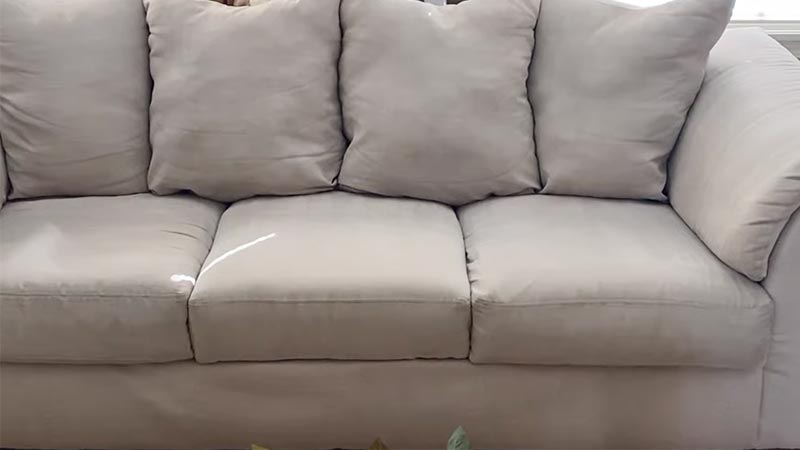
How to Clean Fabric Chairs? 6 Steps
With the right techniques and care, you can easily clean fabric chairs and keep them looking fresh. This section will take you through a step-by-step process to clean fabric chairs effectively.
Materials You’ll Need
- Vacuum cleaner
- Stain remover suitable for your fabric type
- White microfiber cloths
- A bucket to mix cleaning solutions and water
- The spray bottle is useful for applying cleaning solutions
- Mild detergent for cleaning fabric (if recommended by the manufacturer)
- Rubbing alcohol to remove ink stains
- White vinegar to remove some stains
Here are the necessary steps-
Step 1: Read the Manufacturer’s Instructions

Check for any care labels or instructions provided by the manufacturer on your fabric chairs. These instructions will guide you on the appropriate cleaning methods and materials to use.
Begin by using a vacuum cleaner with an upholstery attachment to remove loose dirt, dust, and debris from the fabric. Pay close attention to seams, crevices, and tufted areas.
Step 2: Test for Colorfastness
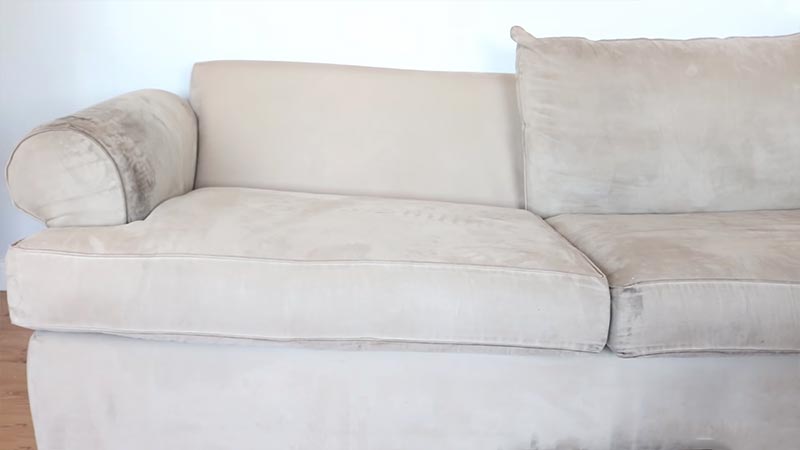
Before applying any cleaning solution, it’s essential to test a small, inconspicuous area of the fabric to ensure it’s colorfast. Dampen a white cloth with your chosen cleaning solution and gently blot a hidden spot on the chair.
Step 3: Treat Stains
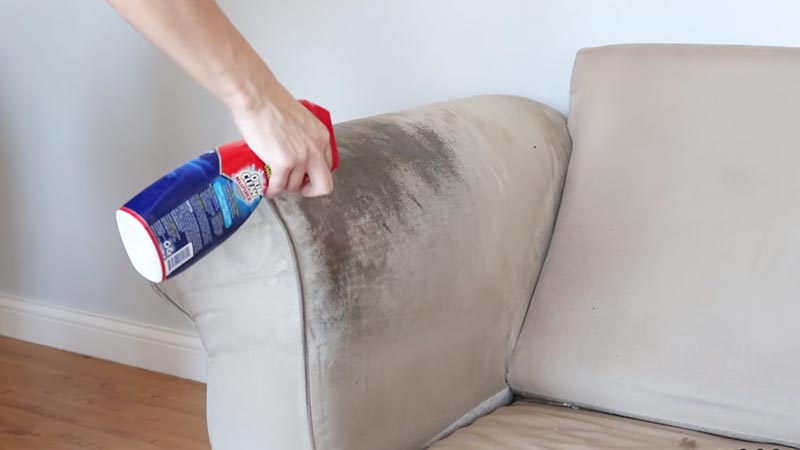
Identify any stains on the fabric and treat them accordingly. For food and drink stains, gently blot the stain with a cloth dampened with mild detergent and water.
Avoid scrubbing, as it may push the stain deeper into the fabric. Rinse with clean water and blot dry.
For ink stains, dampen a cloth with rubbing alcohol and blot the stain. Rinse with clean water and blot dry. For other stains, follow your stain remover’s instructions carefully.
Step 4: Clean the Entire Chair
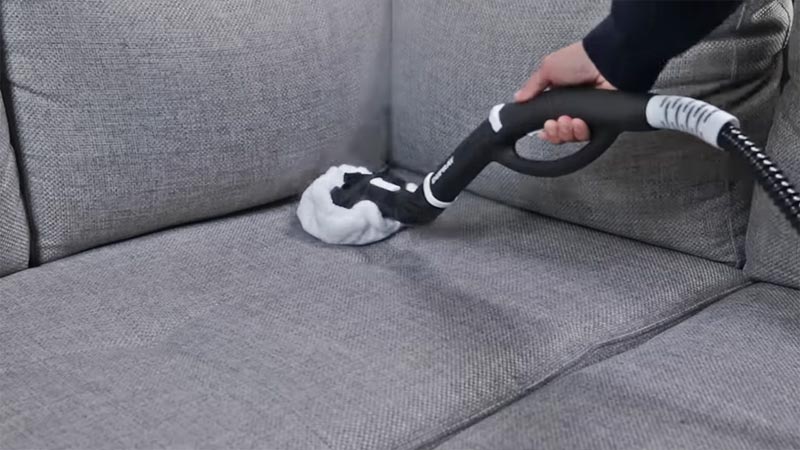
Prepare a cleaning solution by mixing a few drops of mild detergent with water or using a commercial upholstery cleaner as directed. Spray or apply the solution onto the fabric, focusing on one section at a time. Use a soft-bristle brush to agitate the fabric in a circular motion gently.
Step 5: Rinse and Blot
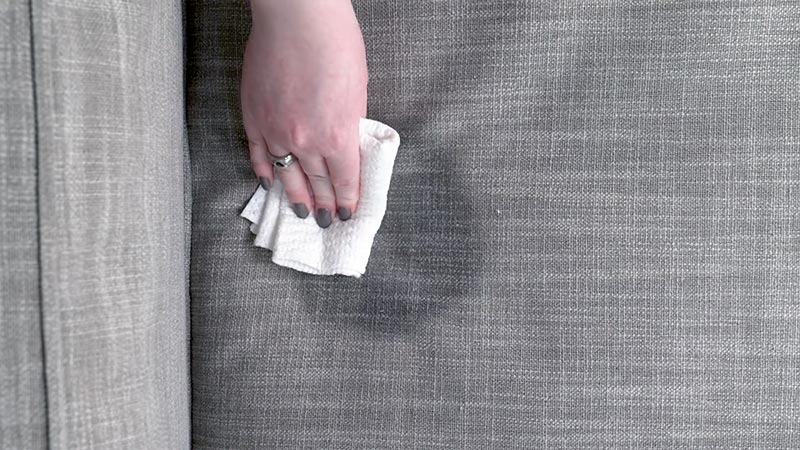
After cleaning each section, rinse by blotting the area with a clean, damp cloth to remove any cleaning solution residue. Continue until you’ve cleaned the entire chair.
If your chair has lingering odors, mix equal parts white vinegar and water in a spray bottle. Lightly mist the fabric, then blot with a clean cloth. Vinegar can help neutralize odors.
Step 6: Allow to Dry
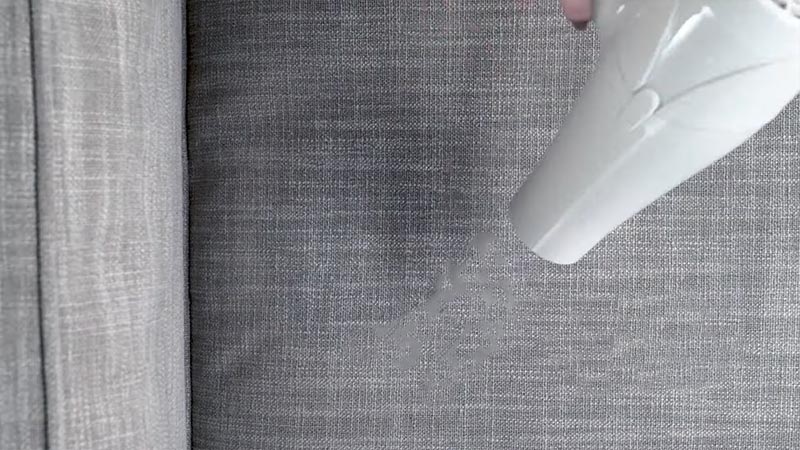
After cleaning, allow the fabric to air dry completely. Keep the chair in a well-ventilated area, and avoid using it until it’s completely dry to prevent mold or mildew growth.
Once the chair is fully dry, vacuum it again to fluff up the fabric and remove any remaining debris.
Additional Tips
If your fabric chair has removable covers, check if they are machine washable. Follow the care label instructions for washing and drying. Consider professional upholstery cleaning services for particularly stubborn stains or heavily soiled chairs.
Regularly vacuum your fabric chairs to prevent dirt and dust buildup. Place a fabric protector on your chairs to make future cleaning easier and protect against stains.
Always follow the manufacturer’s recommendations and exercise caution when dealing with delicate or antique fabric chairs.
How Do You Get Stains Out of a Fabric Chair?
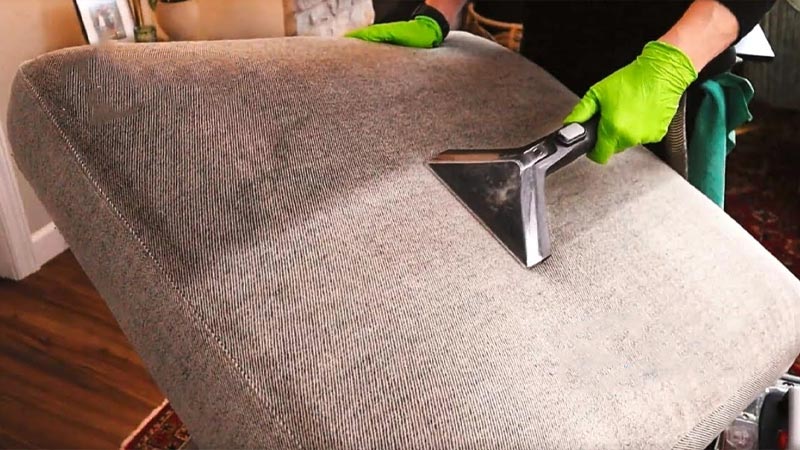
Getting stains out of a fabric chair can be accomplished using various products and techniques, depending on the type of stain and the fabric material. Here’s a guide on how to remove common stains:
Food and Drink Stains
Mild Detergent Solution
This gentle approach works well for most food and beverage stains. Mix a few drops of mild liquid detergent with warm water.
Dampen a clean, white cloth with the solution. Blot the stained area gently; avoid aggressive rubbing. Rinse by blotting with a clean, damp cloth. Finally, blot the area dry with another clean cloth.
Vinegar Solution
White vinegar can be a stain-fighting powerhouse. Mix equal parts white vinegar and water. Dampen a cloth with the solution and blot the stain. Rinse by blotting with a clean, damp cloth. Blot the area dry.
Ink Stains
Rubbing Alcohol
This method can effectively remove ink stains, but be cautious with colored fabrics. Dampen a cloth or cotton ball with rubbing alcohol. Blot the ink stain gently; do not rub, as this may cause the ink to spread. Rinse with clean water and blot dry.
Grease or Oil Stains
Cornstarch or Baking Soda
These household staples can help absorb grease or oil. Sprinkle cornstarch or baking soda generously over the stain. Let it sit for several hours or overnight to absorb the grease. Brush off the powder.
If a residue remains, use a mild detergent solution to blot the area. Rinse with a clean, damp cloth and blot dry.
Blood Stains
Cold Water
Quick action is key for blood stains. Immediately rinse the stain with cold water to dilute and remove as much blood as possible. Blot with a clean cloth to soak up the blood. Repeat the rinsing and blotting until the stain is no longer visible.
Hydrogen Peroxide Solution
This method can be used for white or colorfast fabrics. Mix one part hydrogen peroxide with two parts cold water. Dampen a cloth with the solution and blot the stain. Rinse with clean water and blot dry.
Wine Stains
Salt
Salt is an excellent absorber for fresh wine spills. Quickly blot the wine stain to remove excess liquid. Cover the stain with a generous layer of salt to absorb the wine.
After a few minutes, vacuum or brush off the salt. Use a mild detergent solution to blot the area, then rinse and blot dry.
Coffee or Tea Stains
Vinegar Solution: White vinegar can help neutralize and lift these common stains. Mix one part white vinegar with two parts cold water. Dampen a cloth with the solution and blot the stain. Rinse by blotting with a clean, damp cloth. Blot the area dry.
Nail Polish Stains
Nail Polish Remover
This should only be used on synthetic fabrics to avoid damage. Apply a small amount of non-acetone nail polish remover to a cloth. Blot the nail polish stain gently. Rinse with clean water and blot dry.
Gum or Wax Stains
Freezing Method
This technique makes removal easier. Place a plastic bag filled with ice cubes directly over the gum or wax to harden it.
Once hardened, carefully scrape off the substance with a dull knife, taking care not to damage the fabric. Blot any remaining residue with rubbing alcohol, then rinse with clean water and blot dry.
Always conduct a colorfastness test before removing any stain on your fabric chair. And remember, patience and gentle blotting are your allies in stain removal.
For particularly stubborn or delicate stains, it may be wise to consult a professional upholstery cleaner for expert assistance.
FAQs
How often should I clean my fabric chairs?
The frequency of cleaning depends on usage and exposure to dirt and stains. Generally, vacuuming your fabric chairs regularly is a good practice to prevent dust buildup. Spot clean as needed for spills and stains.
Can I use a steam cleaner on fabric chairs?
Steam cleaners can be used on many fabric chairs, but it’s crucial to check the manufacturer’s care instructions first. Some fabrics are unsuitable for steam cleaning and may shrink or get damaged.
What if my fabric chair has removable covers?
If your fabric chair has removable, machine-washable covers, follow the care label instructions for washing and drying. Close zippers, fasten buttons, or secure Velcro attachments before washing to prevent damage.
Can I use bleach to remove stains from fabric chairs?
Using bleach on fabric chairs is generally not recommended unless the manufacturer explicitly specifies that it’s safe for the fabric.
Bleach can weaken and discolor many types of fabrics. Instead, opt for stain removers and cleaning solutions designed for upholstery.
How can I protect my fabric chairs from future stains?
To prevent future stains and make cleaning easier, consider applying a fabric protector spray, which can create a barrier against spills and stains. Encourage using coasters and placemats to minimize the risk of food and drink spills.
Conclusion
This comprehensive guide unveiled the secrets to reviving your fabric chairs and keeping them looking their best.
Cleaning fabric chairs may seem daunting, but armed with the right knowledge and tools, you can restore their beauty effortlessly.
Remember, prevention is the first line of defense against stains and wear. Regular vacuuming and immediate spot cleaning are your allies in maintaining chair freshness.
Each chair is unique, and understanding its fabric type is crucial for choosing the appropriate cleaning methods. Consult the manufacturer’s care instructions or seek professional help for delicate or stubborn stains when in doubt.
With these techniques in your cleaning arsenal, you can extend the life of your fabric chairs, ensuring they remain both functional and stylish.
Don’t wait any longer. Begin your chair-cleaning journey and rediscover the comfort and allure of your cherished seating.
Leave a Reply